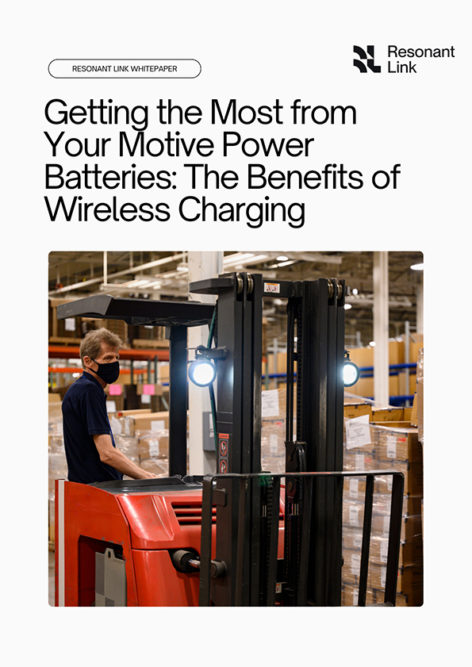
Home » Getting the Most from Your Motive Power Batteries: The Benefits of Wireless Charging
Getting the Most from Your Motive Power Batteries: The Benefits of Wireless Charging

February 1, 2024
Warehouse operators are constantly seeking to reduce costs. Today, power comprises 75% of an average material handling fleet’s operating costs. That includes the capital expenses of batteries and chargers, and large operating expenses of maintenance, refueling or recharging labor, real estate for batteries and chargers, and electricity or fuel. With ongoing labor challenges, higher demands on throughput, space at a premium, and a challenging macroeconomic environment, warehouse operators must adapt their power and energy management to win into the future.
When considering how to most efficiently power their fleets, leaders are pursuing more than cost savings alone. High-performing operations need high vehicle uptime with minimal operator intervention, low maintenance needs, and limited infrastructure upgrades. While lead-acid-battery-powered vehicles - and the associated battery swapping rooms and processes - still dominate the market, forward-looking fleets are starting to adopt newer technologies like hydrogen fuel cells and lithium-ion batteries to lower their operating costs and get more done.
This whitepaper explores the benefits and drawbacks of different motive power batteries and how they’re charged. To keep motive batteries operational as long as possible while reducing upfront and operating costs, fast and automated charging solutions are imperative. By leveraging automated wireless charging fleet managers can achieve the benefits of highly efficient, undisrupted operations with 50% lower upfront capital outlay and up to $1 million in annual operational savings.
Please CLICK HERE to download the white paper.
RELATED CONTENT
RELATED VIDEOS
Related Directories
Subscribe to our Daily Newsletter!
Timely, incisive articles delivered directly to your inbox.
Popular Stories

2024 Supply Chain Management Resource Guide: There's Only One Way Off a Burning Platform
VIEW THE LATEST ISSUECase Studies
-

Enhancing High-Value Electronics Shipment Security with Tive's Real-Time Tracking
-

Moving Robots Site-to-Site
-
JLL Finds Perfect Warehouse Location, Leading to $15M Grant for Startup
-
Robots Speed Fulfillment to Help Apparel Company Scale for Growth
-
New Revenue for Cloud-Based TMS that Embeds Orderful’s Modern EDI Platform



